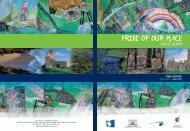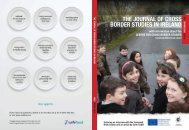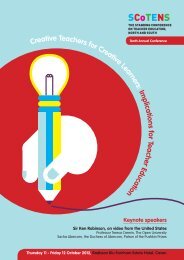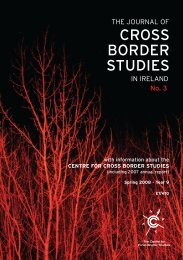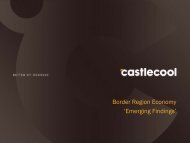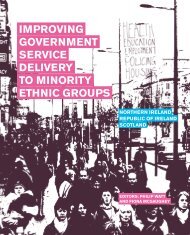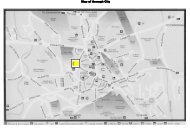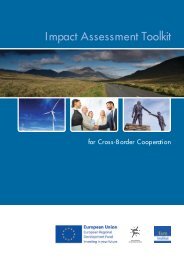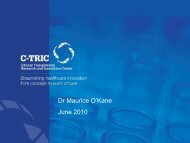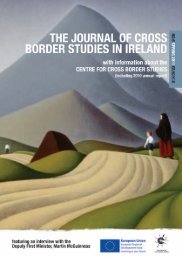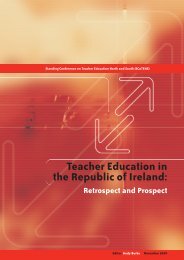4858 Mental Health Report - National University of Ireland, Galway
4858 Mental Health Report - National University of Ireland, Galway
4858 Mental Health Report - National University of Ireland, Galway
Create successful ePaper yourself
Turn your PDF publications into a flip-book with our unique Google optimized e-Paper software.
Findings from the Compatibility and<br />
Comparability <strong>of</strong> <strong>Mental</strong> <strong>Health</strong> and<br />
Related <strong>Health</strong> Data Sources<br />
Socio-demographics<br />
In almost all surveys, the only common socio-demographic indicators were age<br />
and gender. In the adult national surveys, North and South, detailed information<br />
was recorded on education. Given the strong predictive power <strong>of</strong> education as an<br />
indicator for inequalities in health, the ability to classify data into primary,<br />
secondary and third level education as a single measure <strong>of</strong> inequalities is an<br />
invaluable measure in any population health monitoring system. The more<br />
complex measure <strong>of</strong> social class was also recorded in the national surveys. Each<br />
survey recorded the occupation <strong>of</strong> the respondent, which was then classified into<br />
one <strong>of</strong> six social classes based on job title and employment status. Other<br />
indicators <strong>of</strong> social inequality such as home tenure and marital status were<br />
recorded in the national and some regional surveys.<br />
Lifestyle Behaviours<br />
Lifestyle factors were recorded in six surveys in the Republic and all three<br />
Northern surveys. Most commonly recorded were prevalence, frequency and<br />
quantity <strong>of</strong> consumption <strong>of</strong> both tobacco and alcohol - however, the measures<br />
used for each <strong>of</strong> these were not directly comparable. Dietary habits were also<br />
measured but in a non-standard way. Three questions relating to frequency <strong>of</strong><br />
consumption <strong>of</strong> foods high in fat, sugar and fruit and vegetables were asked in<br />
the Northern <strong>Ireland</strong> Survey <strong>of</strong> <strong>Health</strong> and Social Wellbeing, whereas a 148 item<br />
semi-quantitative food frequency was used in the <strong>National</strong> <strong>Health</strong> and Lifestyle<br />
Survey in the Republic. Participation in physical activity was only recorded at a<br />
national level in the Southern survey. Many <strong>of</strong> the other smaller regional and<br />
local surveys measured this parameter but employing different measures.<br />
Young People<br />
The socio-demographic, economic and lifestyle variables recorded in the children’s<br />
survey, HBSC, were the same due to observation <strong>of</strong> an internationally devised<br />
protocol. There were three mental health and well-being measures common in<br />
both the Northern and Southern arms <strong>of</strong> the HBSC survey. General health and<br />
satisfaction with health were measured using a 3 and 5 point Likert scale<br />
respectively. The Rosenberg Self-Esteem Scale was used to measure self-esteem<br />
among the young people.<br />
99



